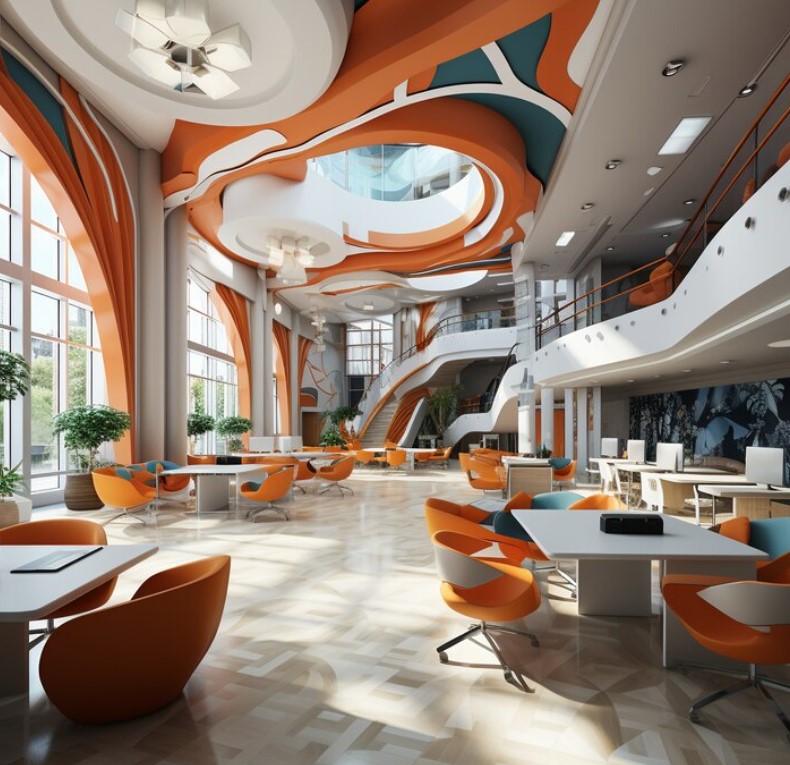The design of a restaurant goes far beyond aesthetics. It’s a complex process that requires a solid understanding of space functionality, customer flow, and dining experience enhancement. Whether you’re launching a new venture or revamping an existing one, creating a welcoming space where patrons can savor their meals is paramount. Keep reading to unlock the insights and resources necessary for designing a captivating restaurant space that marries form and function beautifully.
Understanding the Basics of Restaurant Design
Embarking on restaurant design begins with grasping the fundamentals. Key considerations include space planning, which determines the flow of movement within the diner, and zoning areas for various functions such as dining, cooking, and storage. An efficient layout is crucial for both customer satisfaction and operational ease. Knowing the demographics of your target audience can also guide the overall design direction, making the space appealing to the customers you wish to attract.
Lighting plays a pivotal role in establishing the ambiance, with different intensities and colors influencing the mood and perceived space warmth. Alongside lighting, acoustics needs thoughtful attention to ensure that the diners can enjoy conversations without being overwhelmed by kitchen noises or adjacent tables. The overall sensory experience can make or break the perceived value of dining at your establishment.
Choosing the right color palette and textures sets a distinct vibe for your restaurant. Opting for warm, earthy tones might suggest a cozy, rustic atmosphere, while a monochromatic scheme with pops of vibrant colors could steer towards a modern, chic aesthetic. Incorporating commercial deep fryers and other kitchen equipment in your layout from the get-go is also essential, as this dictates the kitchen workflow efficiency.
Utilizing Professional Services: Architects, Interior Designers, and Contractors
While harnessing your creativity is a significant part of designing your restaurant space, tapping into professional expertise can turn your vision into reality. Architects and interior designers bring specialized knowledge to the table, ensuring that each aspect of your restaurant design is both beautiful and functional. They can anticipate challenges and offer innovative solutions that might not be immediately apparent to the untrained eye.
In regions with challenging climates, like Florida, controlling the environment inside your restaurant is essential for guest comfort. Employing a reliable HVAC provider, such as Arctic Breeze Air Conditioning & Heating Inc. Palm Coast, FL, can make a significant difference in maintaining the right temperature and humidity levels. Comfortable guests are happier and more likely to return, making this aspect of the design process a worthwhile investment.
Navigating Building Codes and Permits: Essential Guidance for Restaurateurs
Understanding local building codes and obtaining the necessary permits can be a daunting aspect of restaurant design. Compliance ensures the safety of both patrons and employees and neglecting this process can result in costly legal ramifications. It’s essential to research relevant regulations early in the planning phase to integrate them seamlessly into your design.
The specifics can vary significantly by location, and they cover everything from fire safety and accessibility to restrooms and electrical systems. Engaging with local authorities or a consultant specialized in code compliance can provide invaluable insight and streamline the permit application process. This due diligence is not just a legal formality; it can also influence crucial aspects of your design blueprint.
Sourcing the Right Furniture and Décor for Your Restaurant’s Theme
Sourcing furniture and décor that align with your restaurant’s theme is an exciting yet complex endeavor. The choice of tables, chairs, and decorative elements should serve both aesthetic and practical purposes. They must withstand heavy use while contributing to the overall atmosphere you aim to create. Quality and durability are as important as style; therefore, investing in commercial-grade furniture is a wise decision for longevity.
Considering the comfort of your guests is paramount when selecting seating options. Ergonomic designs that accommodate varied customer needs will enhance dining experiences and encourage prolonged visits. Similarly, lighting fixtures should be both functional and decorative, providing sufficient illumination while reinforcing the design theme. Thoughtful touches such as artwork, tableware, and textiles can bring your concept to life and make a lasting impression.
Altogether, when designing a restaurant space, integrating form with function is fundamental to creating an environment that patrons will love and remember. With the right mix of design basics, technology, compliance, thematic elements, and professional expertise, you can craft a restaurant that not only serves great food but also offers an exceptional dining experience.
Hint Magazines is your go-to destination for a diverse range of topics and insights. Explore engaging articles that inspire, inform, and entertain, all crafted to keep you updated on the latest trends and ideas.



